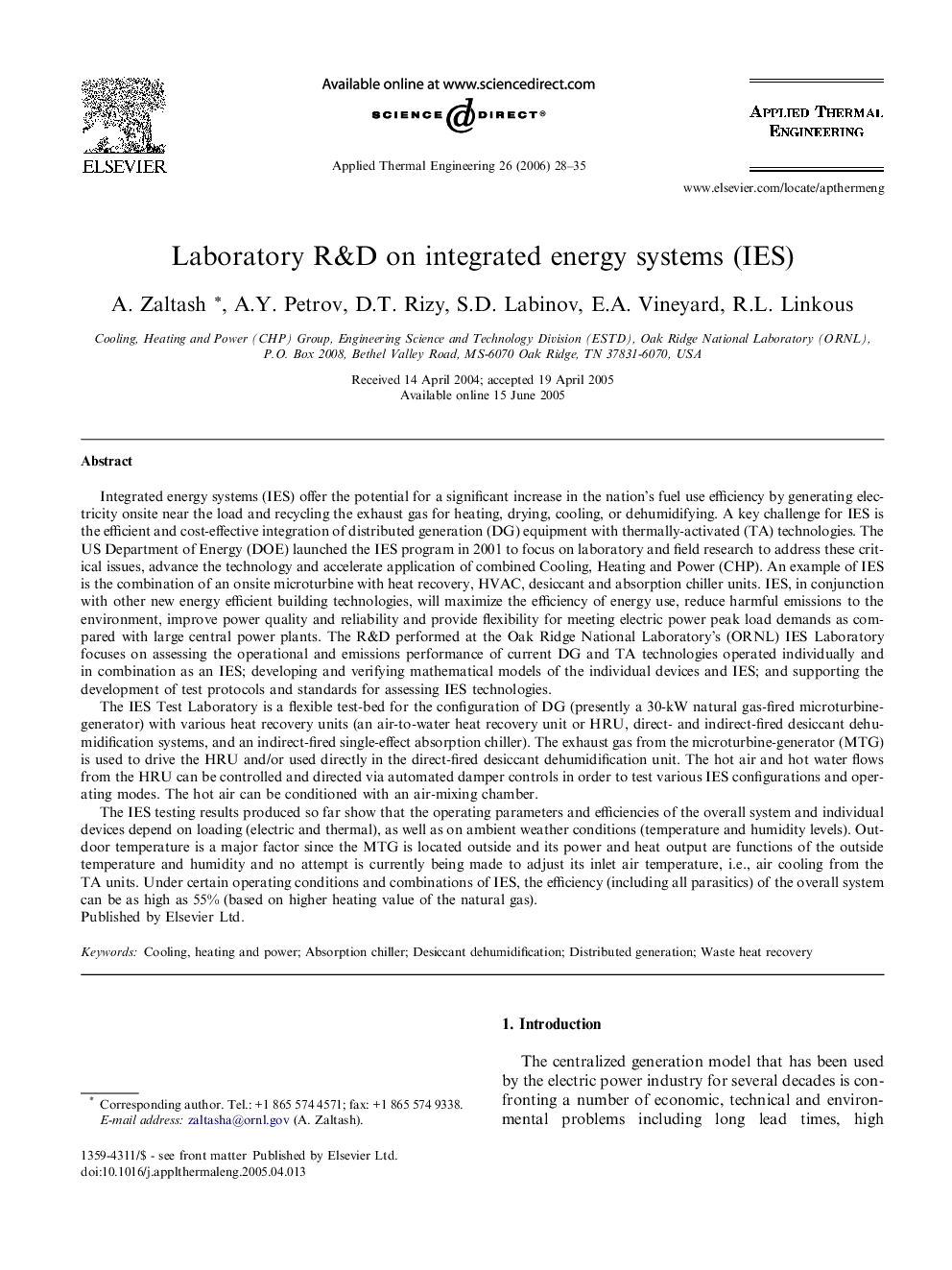| کد مقاله | کد نشریه | سال انتشار | مقاله انگلیسی | نسخه تمام متن |
|---|---|---|---|---|
| 649872 | 884683 | 2006 | 8 صفحه PDF | دانلود رایگان |

Integrated energy systems (IES) offer the potential for a significant increase in the nation’s fuel use efficiency by generating electricity onsite near the load and recycling the exhaust gas for heating, drying, cooling, or dehumidifying. A key challenge for IES is the efficient and cost-effective integration of distributed generation (DG) equipment with thermally-activated (TA) technologies. The US Department of Energy (DOE) launched the IES program in 2001 to focus on laboratory and field research to address these critical issues, advance the technology and accelerate application of combined Cooling, Heating and Power (CHP). An example of IES is the combination of an onsite microturbine with heat recovery, HVAC, desiccant and absorption chiller units. IES, in conjunction with other new energy efficient building technologies, will maximize the efficiency of energy use, reduce harmful emissions to the environment, improve power quality and reliability and provide flexibility for meeting electric power peak load demands as compared with large central power plants. The R&D performed at the Oak Ridge National Laboratory’s (ORNL) IES Laboratory focuses on assessing the operational and emissions performance of current DG and TA technologies operated individually and in combination as an IES; developing and verifying mathematical models of the individual devices and IES; and supporting the development of test protocols and standards for assessing IES technologies.The IES Test Laboratory is a flexible test-bed for the configuration of DG (presently a 30-kW natural gas-fired microturbine-generator) with various heat recovery units (an air-to-water heat recovery unit or HRU, direct- and indirect-fired desiccant dehumidification systems, and an indirect-fired single-effect absorption chiller). The exhaust gas from the microturbine-generator (MTG) is used to drive the HRU and/or used directly in the direct-fired desiccant dehumidification unit. The hot air and hot water flows from the HRU can be controlled and directed via automated damper controls in order to test various IES configurations and operating modes. The hot air can be conditioned with an air-mixing chamber.The IES testing results produced so far show that the operating parameters and efficiencies of the overall system and individual devices depend on loading (electric and thermal), as well as on ambient weather conditions (temperature and humidity levels). Outdoor temperature is a major factor since the MTG is located outside and its power and heat output are functions of the outside temperature and humidity and no attempt is currently being made to adjust its inlet air temperature, i.e., air cooling from the TA units. Under certain operating conditions and combinations of IES, the efficiency (including all parasitics) of the overall system can be as high as 55% (based on higher heating value of the natural gas).
Journal: Applied Thermal Engineering - Volume 26, Issue 1, January 2006, Pages 28–35